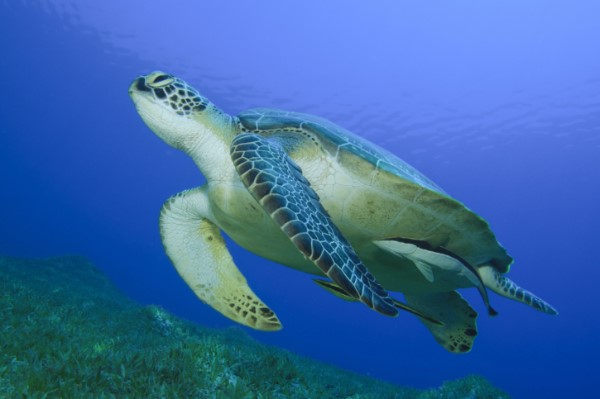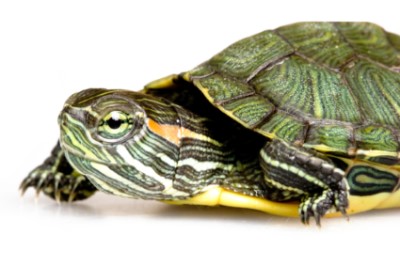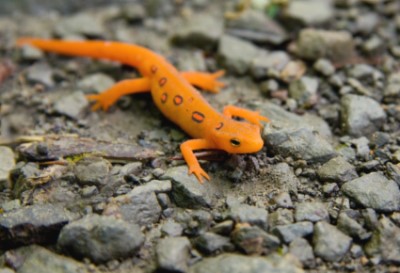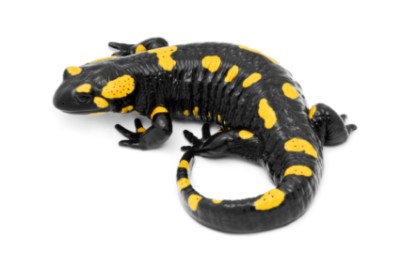Common Reasons for Surrender
A female slider can grow as large as a dinner plate and become quite heavy. People often surrender a turtle because he grew too big, something of which they were unaware because they did not do sufficient research prior to purchasing the pet. It is illegal to release any pet into the wild, including the turtle. Domesticated turtles will most often be eaten by a raccoon or other animal because she is not used to survival in the wild.
Pros
Aquatics do not have to be in the water all the time. In fact, sliders may actually follow you around the house like a puppy. In the summertime, you can bring the turtles outside. One of the latest things on the market for turtles is what’s called a Water Land Tub, which is motored to accommodate aquatic turtles. You can also purchase a large stock tank or feeding trough for larger animals as a home for your aquatic turtle.
Cons
The most difficult part about keeping an Aquatic Turtle is keeping the water or filters clean. It’s important to keep that going because if you slack on it, the animal will suffer. A child should never handle the turtle without adult supervision. Turtles can get salmonella infection and that can be serious. Children should look and not touch. Adults should always wash their hands after touching the turtle.
Diet
All aquatic turtles need fresh clean water. Salmonella comes from dirty water, so be sure to keep the water clean by using a good filtration system or change the water twice a day.
Your aquatic turtle may be fed in his own tank or you may wish to keep a separate feeding tank because these turtles are messy eaters. Aquatic turtles like to eat small crickets, worms, fish, night crawlers, and cockroaches. They also need dark leafy green vegetables, such as kale and collard greens. Vitamin and mineral powder supplements may be sprinkled on the food once a week. Adults are fed every other day, and young turtles are fed once daily.
Exercise
You won’t want to take your turtle out for a walk on a leash. Build the right environment, and your aquatic turtle will thrive.
Possible Health Issues
Most health issues are connected to husbandry. If the water is too cold or too dirty, your aquatic turtle can get ear infections and respiratory infections, and her shell can even get soft. Turtles can even get septic. A healthy turtle can usually flip himself back over if he goes upside down. If he’s basking and that happens, he can die of heat stroke or he can get into trouble because it’s hard for him to breathe when he’s on his back.
Housing
The general rule of thumb in tank size is to get a tank that measures 10 gallons per inch of turtle. For example, if you have a three-inch turtle, buy a thirty-gallon aquarium. Turtles need space in both land, which includes a basking rock beneath a heat lamp, and clean filtered water. Your turtle should be able to climb out of the water onto a land space like a turtle dock. Some lamps will provide both a UV light and a heat lamp. The heat lamp needs to be on one side of the tank above the basking rock, not over the water. Sliders (sometimes called cooters) like the water temperature to hover around the mid 80s. The basking spot needs to be about 90 to 95 degrees. Be sure to have a thermometer to measure the water and air temperatures in your tank. Remember that you can set up a pond outside. You can heat the turtle pond in the winter when turtles hibernate.
Grooming
Sometimes aquatic turtles will grow algae on their shells, a sign they’re not basking enough. If there are several turtles that fight and the submissive one never gets on the basking spot, he’s not getting time to sit out and dry his shell.
Training
Turtles do learn to recognize their keepers and will recognize the keeper as source of food and do all sorts of antics to get your attention so you’ll give them food. When they are comfortable and safe, they’ll spread their arms and legs to get as much sunshine as possible on them.
Entertainment
A healthy turtle enjoys eating. They’re little eating machines. People sometimes feed their turtles too much and turtles get obese. They should only be fed as much as would fit in their heads.
ADDITIONAL RESOURCES
The Great Big Book of Snakes and Reptiles by Barbara Taylor and Mark O’Shea
We want to thank Reptile and Amphibian Rescue, Los Angeles, California for help with this profile.




